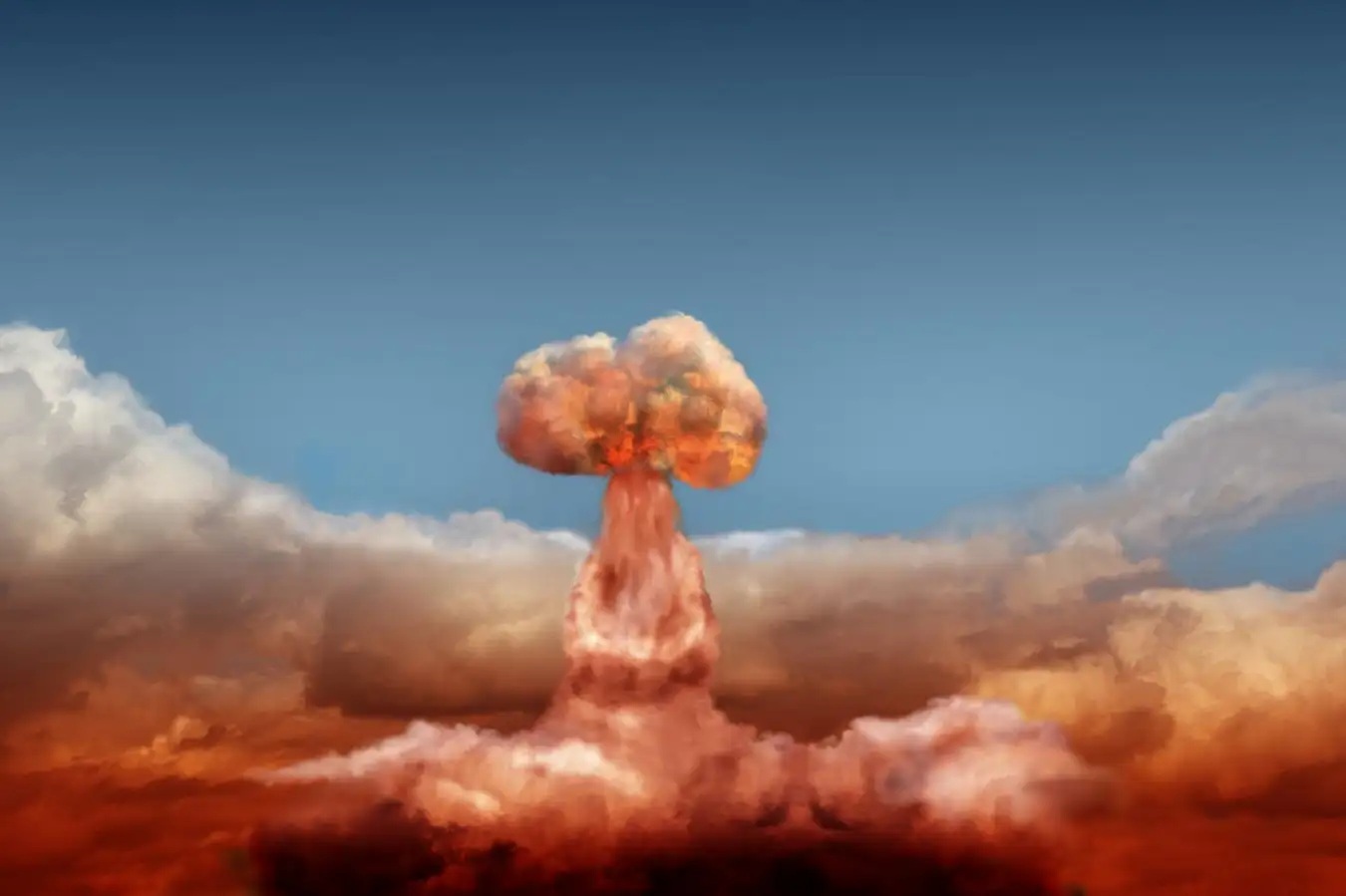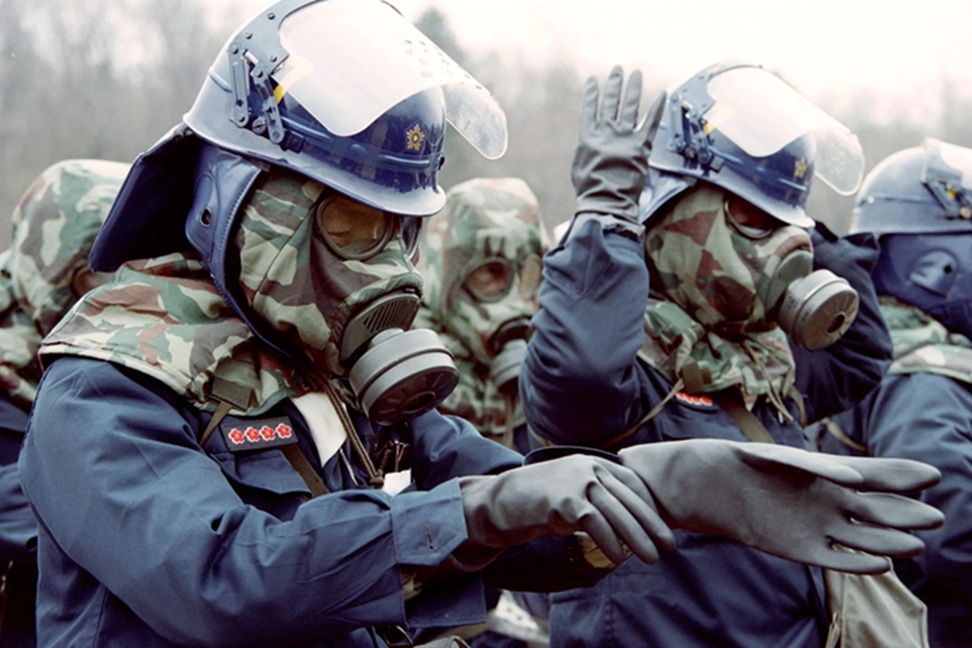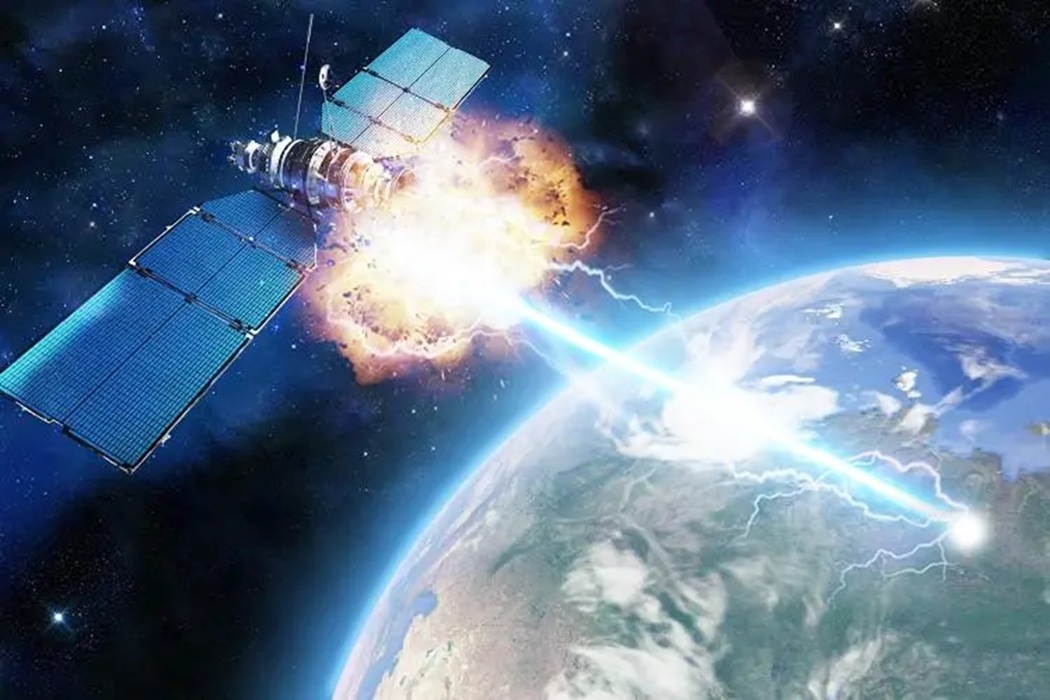The conceptual framework of nuclear deterrence has long rested on assumptions of rationality, stability, and the preservation of national survival by the nuclear powers. The Cold War’s logic of Mutually Assured Destruction (MAD) presumed that nuclear-armed states would avoid direct conflict for fear of reciprocal annihilation. Yet the accelerating climate crisis may be quietly eroding these assumptions. As environmental collapse reshapes the geostrategic landscape, the calculus underpinning nuclear deterrence may become dangerously unstable.
Climate change will not only act as a “threat multiplier,” intensifying existing tensions, but could also recalibrate how nuclear powers perceive risk, opportunity, and necessity. By examining the interplay between environmental stress and nuclear decision-making, we can better understand the latent dangers that conventional deterrence theory fails to anticipate.
The Convergence of Existential Threats
Climate change and nuclear weapons are both existential threats, but their interaction is rarely studied in tandem. One is slow-burning, cumulative, and global; the other is instantaneous, catastrophic, and, in theory, avoidable. However, as climate impacts become immediate and irreversible—through extreme weather, water scarcity, and food system collapse—nuclear-armed states may face internal crises of such magnitude that the traditional disincentives against nuclear use weaken.
Severe drought in a nuclear state dependent on shared river systems could precipitate a security dilemma. The Indus Basin, shared between India and Pakistan, is already stressed by melting glaciers and erratic monsoons. If agricultural collapse is perceived as a threat to national survival, leaders might adopt riskier military postures, including lower nuclear thresholds, under the logic that desperation justifies extreme measures.
Resource Scarcity as a Catalyst for Escalation
History teaches us that wars have often been fought over resources. In the Anthropocene, such competition may unfold under thermonuclear shadows. While Cold War nuclear strategy assumed relatively stable territorial boundaries and access to critical resources, climate change will scramble these expectations.
The Arctic is a case in point. Melting sea ice is opening shipping lanes and exposing untapped hydrocarbon reserves, drawing renewed interest from Russia, the United States, and China—all nuclear powers. This creates a paradox: the very environmental degradation that should compel cooperation instead fuels militarised competition. In such contested zones, nuclear capabilities may be used for coercive signalling, raising the risk of miscalculation.
Similarly, maritime disputes in the South China Sea—already a flashpoint between nuclear-armed China and U.S.-allied states—may intensify as warming oceans deplete fish stocks. If environmental collapse is perceived as an existential challenge to food security, nuclear signalling could migrate from the abstract realm of deterrence into the tangible realm of resource competition.
Domestic Instability and Nuclear Decision-Making
Classical deterrence theory presumes that nuclear decision-making occurs within a rational-actor framework, insulated from domestic chaos. Yet climate-induced crises will likely weaken state capacity, erode public trust, and destabilise political systems. In nuclear states, this raises an unsettling question: how resilient are command-and-control systems under conditions of internal collapse?
Pakistan provides a case study in potential vulnerability. The country faces acute exposure to climate shocks, floods, heatwaves, and glacial melt while simultaneously grappling with political volatility and militant violence. Should environmental disasters overwhelm governance capacity, the risk is not only accidental nuclear use, but also unauthorised access to nuclear materials.
Even in highly institutionalised nuclear powers, climate disasters can disrupt readiness and control. The United States, for instance, has critical military installations in hurricane-prone coastal areas; rising seas could threaten the physical security of nuclear assets, while natural disasters strain military response capacity.
The Psychological Dimension: Shifting Risk Perceptions
Deterrence relies on the belief that survival is best served by restraint. But in a world where climate change is rapidly eroding economic and social stability, leaders may adopt what Thomas Schelling called a “use them or lose them” mentality not in relation to their nuclear stockpiles, but in relation to geopolitical opportunity.
If a state believes that its long-term survival is imperilled by climate-driven decline, it may seek to lock in short-term strategic gains, even at high risk. This is particularly dangerous in rivalries where one state fears that environmental degradation will permanently weaken its relative power. A future where rising seas undermine China’s coastal megacities, or prolonged drought cripples India’s agricultural base, could incentivise preemptive assertiveness in unresolved territorial disputes underpinned by nuclear deterrence.
Crisis Signalling in an Unstable Environment
The mechanics of nuclear signalling, military exercises, missile tests, and bomber patrols become more volatile when overlaid with climate-induced instability. A nation struggling to recover from a climate disaster may misinterpret an adversary’s nuclear manoeuvre as opportunistic aggression. Conversely, an aggressor may believe its rival is too distracted or weakened to respond decisively, creating a window for provocation.
In such contexts, the traditional firebreak between conventional and nuclear conflict may erode. Leaders under climate-induced duress may have less tolerance for prolonged conventional wars, increasing the temptation to escalate quickly.
Climate Change and Extended Deterrence
The credibility of extended deterrence, whereby a nuclear power pledges to defend allies, could also be strained by climate disruptions. If a guarantor state is preoccupied with its own survival in the wake of environmental catastrophe, its willingness to incur nuclear risk on behalf of allies may diminish. This could embolden adversaries to test the limits of the security guarantee, as in the case of U.S. commitments to Pacific island states facing existential climate threats.
Moreover, the displacement of millions due to rising seas, drought, or flooding will create refugee flows that strain alliances and domestic politics. In such conditions, the cohesion of deterrence frameworks like NATO or U.S. alliances in East Asia may weaken, creating strategic ambiguity that invites opportunism.
Toward a Climate-Integrated Deterrence Theory
If the climate crisis is to be factored into nuclear strategy, it requires a fundamental shift in thinking. A climate-integrated deterrence theory would need to address three critical gaps: the resilience of nuclear infrastructure; crisis management under environmental stress; and multilateral mechanisms to reduce the incentive for nuclear escalation over climate-stressed resources.
Such a framework must also acknowledge that environmental collapse could accelerate proliferation pressures. States feeling existentially threatened by climate impacts may perceive nuclear capability as a hedge against instability, even if that instability is primarily environmental rather than military.
The Moral Imperative
There is also a moral dimension often missing from strategic discourse. Both nuclear war and unchecked climate change are preventable human catastrophes. To address one while neglecting the other is an act of strategic myopia. Yet the nuclear and climate communities often operate in silos, arms control experts treating climate change as a peripheral issue, and climate policy circles avoiding the fraught politics of nuclear weapons.
An integrated approach recognises that the same international trust and cooperation needed for nuclear disarmament is required for climate mitigation. Indeed, arms control diplomacy could be revitalised by linking it to climate security initiatives, offering states a broader package of mutual survival benefits.
Conclusion: A Fragile Balance in a Warming World
Deterrence theory emerged in a relatively stable planetary climate, during an era when geopolitical risk was viewed through a narrow military lens. That world no longer exists. The 21st century will be defined by the interplay of environmental collapse and strategic competition, and nuclear powers will face unprecedented pressures that could warp their perception of risk.
The danger is not that climate change will directly cause nuclear war, but that it will erode the stabilising pillars upon which nuclear restraint depends: political stability, rational calculation, and confidence in long-term survival. As these foundations weaken, the architecture of deterrence may become brittle, vulnerable to shocks that a more stable system could absorb.
The challenge, therefore, is not only to reduce greenhouse gas emissions or modernise arms control treaties, but to reimagine global security architecture for a world where environmental collapse is not a distant possibility, but an active condition. If we fail, we may discover too late that the logic of deterrence, like the climate, has crossed a tipping point.
Title image courtesy: New Scientist
Disclaimer: The views and opinions expressed by the author do not necessarily reflect the views of the Government of India and Defence Research and Studies








